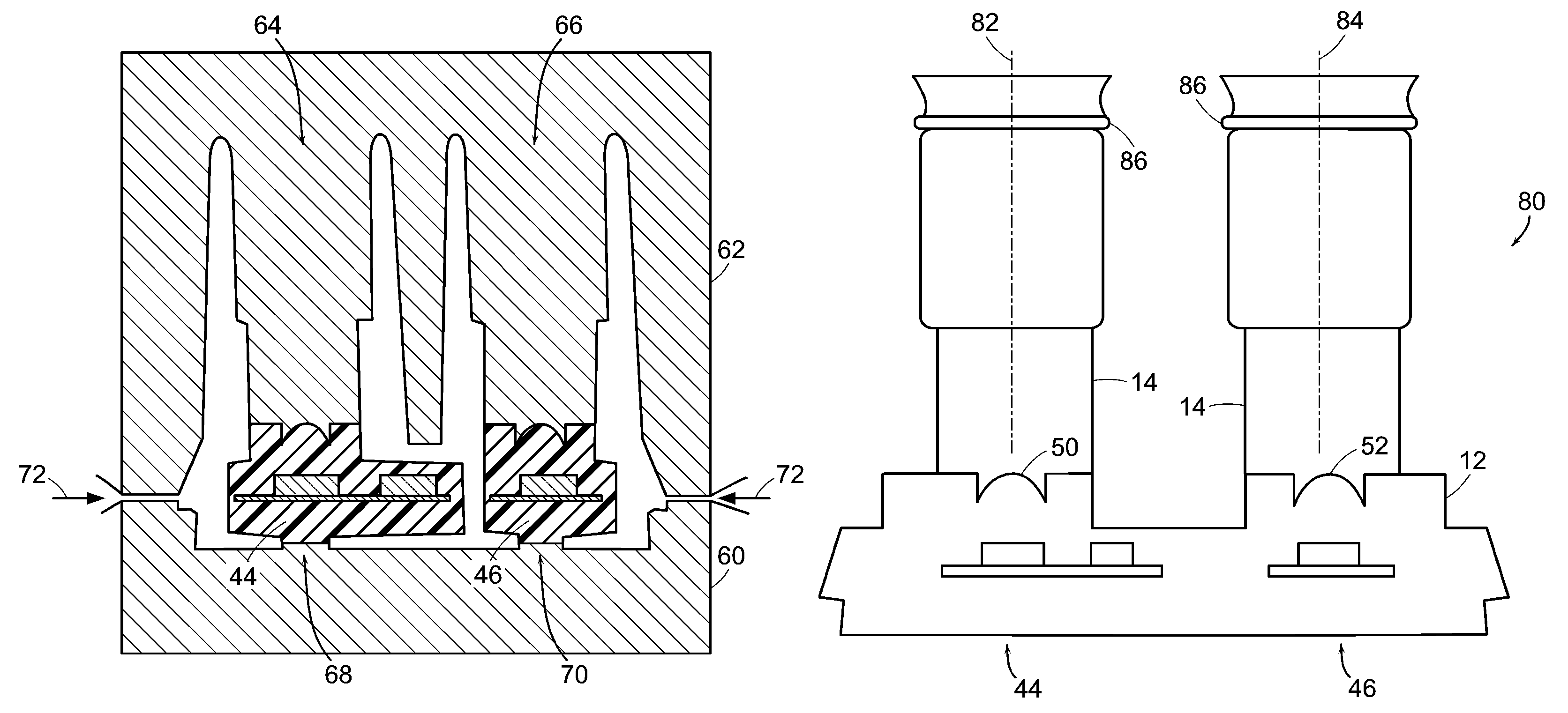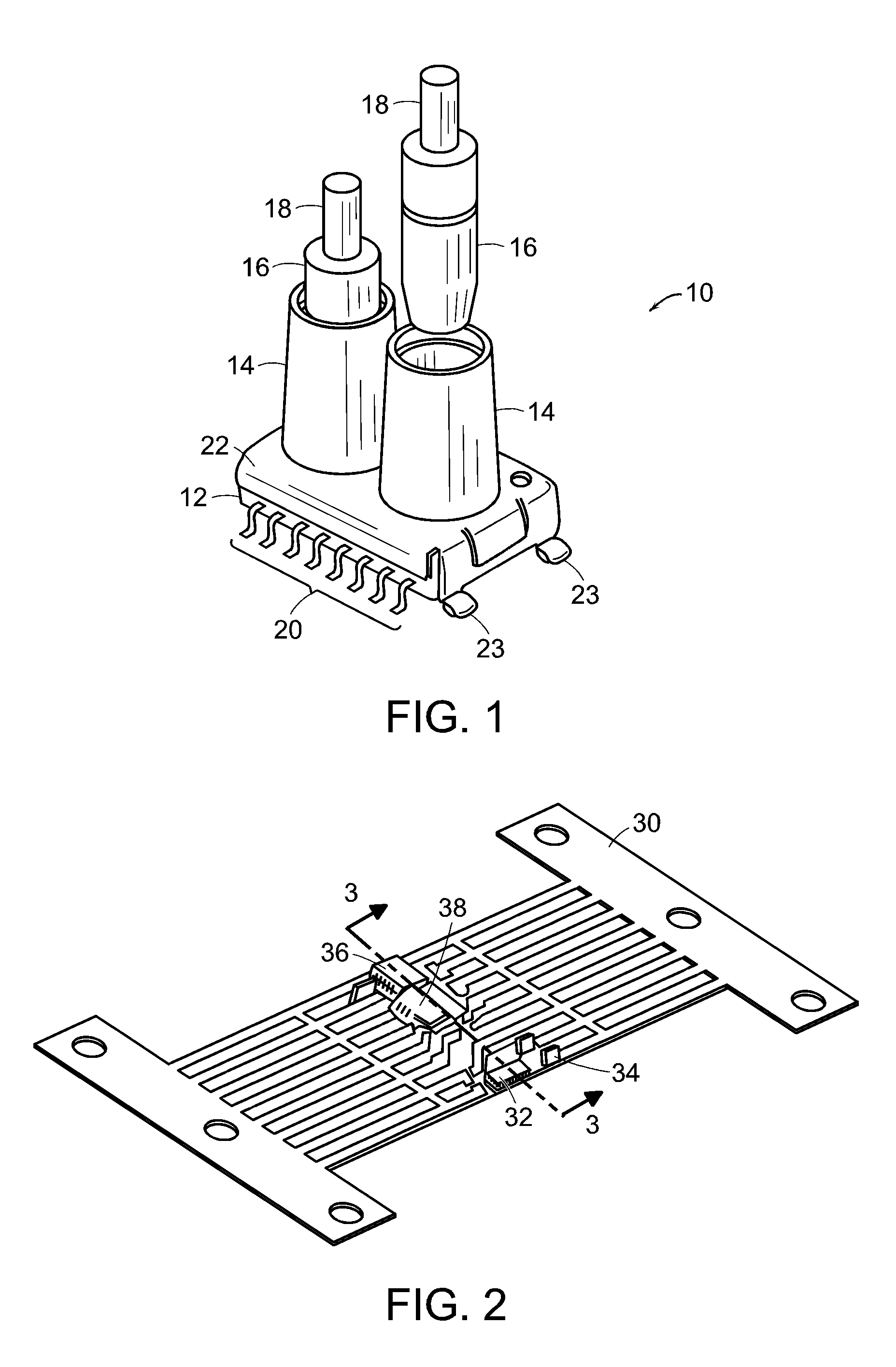Semiconductor package having optical receptacles and light transmissive/opaque portions and method of making same
a technology of semiconductors and semiconductors, applied in the field of semiconductor packages, can solve the problems of not being suitable for many applications, the overall size of the resultant package, and the amount of space required to accommodate separate optical and electronic packages, so as to avoid damage to internal electrical leads, less cost, and high injection pressure and temperature
- Summary
- Abstract
- Description
- Claims
- Application Information
AI Technical Summary
Benefits of technology
Problems solved by technology
Method used
Image
Examples
Embodiment Construction
[0039]Optoelectronic interconnects may be fabricated to provide emission, detection, modulation and / or amplification of light. In most cases, however, optoelectronic interconnects include an optical source (i.e., an “optoelectronic transmitter” or an “emitter”) and / or an optical detector (i.e., an “optoelectronic receiver”), each of which is coupled to its own electronic support circuitry. In general, optoelectronic transmitters convert electrons into photons, which may then be transmitted across an optical transmission media, such as free-space, an optical fiber or waveguide. Optoelectronic receivers, on the other hand, convert photons received from the optical transmission media back into electrons.
[0040]The optical transmission media chosen for a given application is typically based on properties of the transmission path, such as path length, direction and clarity. For example, an optical signal may be transmitted through free-space when direct chip-to-chip, chip-to-board or boar...
PUM
 Login to View More
Login to View More Abstract
Description
Claims
Application Information
 Login to View More
Login to View More - Generate Ideas
- Intellectual Property
- Life Sciences
- Materials
- Tech Scout
- Unparalleled Data Quality
- Higher Quality Content
- 60% Fewer Hallucinations
Browse by: Latest US Patents, China's latest patents, Technical Efficacy Thesaurus, Application Domain, Technology Topic, Popular Technical Reports.
© 2025 PatSnap. All rights reserved.Legal|Privacy policy|Modern Slavery Act Transparency Statement|Sitemap|About US| Contact US: help@patsnap.com



